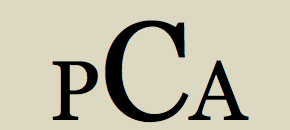PUSD: State Science Class Models, Community Communication
I attended the School Board meeting on Wednesday, November 11, 2016. This governmental body meets every two weeks to discuss issues and make decisions about the Piedmont Unified School District, including the three elementary schools, the Middle School, and both Piedmont and Millennium High School. This meeting was focused on honoring Rick Raushenbush, who is retiring from the board, and reviewing the many science class models presented by the state of California for both the middle school and the high school. Almost all of the board members, and a community member, spoke about Mr. Raushenbush and presented him with gifts.
Alisha Lewis also delivered the school report to the board, mentioning events like the seniors’ urban plan projects, Civics students’ phone banking for campaigns, and the theater program’s performance, “The Drowsy Chaperone.” Community members, including many students, had the opportunity to speak about an issue. I spoke to the topic of AP classes, because I have noticed that many of the advanced classes are in the Science Department, and I would love to see more opportunities in the humanities/social sciences realm, specifically for classes like Psychology. The board did not comment, other than to thank me for my input.
A large chunk of the meeting was devoted to presenting NGSS (Next Generation Science Standards) course models for the middle and high school. Dr. Cheryl Wozniak and Principal Shati Shah, along with middle and high school teachers, presented these options, including benefits and challenges for each, which the state has developed. They explained how there are new standards for the science department, and they would like to incorporate more earth science and engineering into most classes. At the middle school level, there are two options, one of which more closely aligns with the current course system, and one that integrates all areas of science into each level. There are also eight different models at the high school level, three of which are accelerated. Each model has drawbacks and benefits, although many of the accelerated models seemed to have the most challenges.
Personally, I think it would make more sense to make more engineering and earth/space classes available, rather than try to incorporate those in the existing courses. I like that right now, most students have freedom to choose their science path, but if they are required to take classes that are not domain specific, they cannot focus on a particular interest and college applications become more confusing. However, the board must pick one of the options provided by the state, so whichever one has the least specific path structure and would be ideal. I do think that integrated science at the middle school level would be helpful, though.
Another issue addressed by the board is the methods of communication, and whether community feel they can both stay informed and share their own opinions. Some members spoke to the idea of parents selecting filters, so they might only hear about their topics of interest (ex: arts, high school) and therefore do not become desensitized to the constant email communication that would otherwise occur.
I interviewed Board Member Doug Ireland, who spoke to his motivation for being involved. He said that he loves the job and aims to maintain good schools, as that is critical to the community. Specifically about Wednesday’s meeting, he mentioned that difficulties include curriculum changes and budgeting. The process of changing curriculum involves meeting about the changes, getting updates from staff in order to make informed decisions, and reviewing different curriculum; the same method was used when they reformed the math curriculum last year. In terms of updating the schools, they are spending money to fix facilities in order to modernize learning in all aspects.
Ella Gilbert, Piedmont High School Senior


